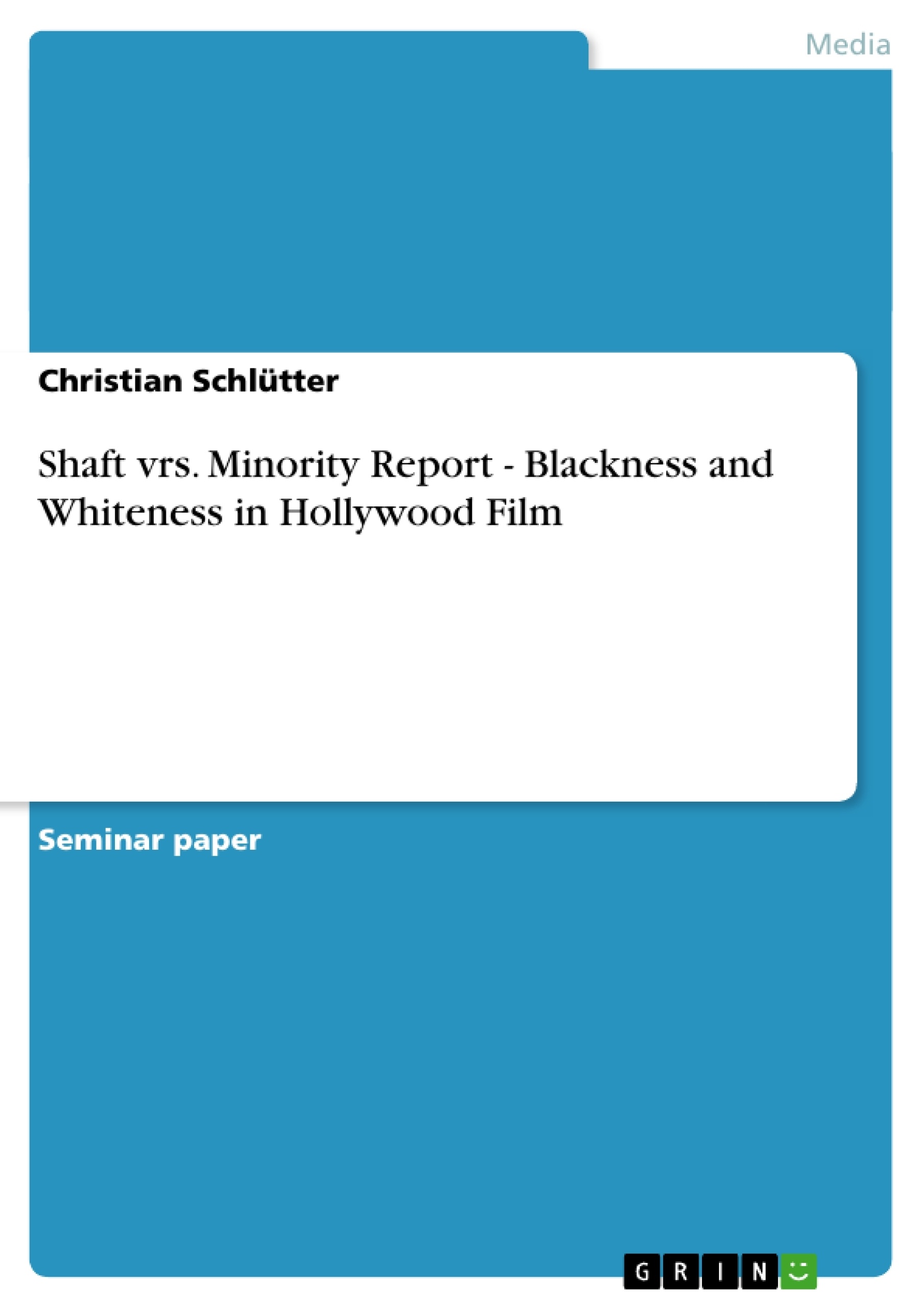At least since political and social considerations of black rights movements have found their way into Hollywood movie studios in the 1960ies, blackness in film has always been a central point of cinematographic discussion. Blaxploitation movies, for example, have been critically observed by both white and black film critics and have gained a wide range of differentiated responses. Interesting enough, whiteness in Hollywood film has mostly been disregarded by critics until the late 1990ies. Indeed “There has recently been a recognition of the need to undertake analysis of whiteness without maintaining and intensifying the privileged position assigned to it” (Young, Lola; Fear of the Dark – Race, Gender and Sexuality in the Cinema. New York: Routledge. 1996: 32). The fact that a film has a white director or is mainly starred by white actors seems to be normality in western societies. “White has no categorical status: it is the norm against which everything else is measured with no need of selfdefinition.” [Dyer, Richard. “White” Screen: The Last Special Issue on Race?. Volume 29, Number 4, Autumn: 44-65. 1988. Quoted in: Young (1996)]. This quote exemplifies the role that whiteness had for a long time within the western cinematic analysis system. With the changing conception of blackness in film and the change in the political discourse of the terms ‘race’ and ‘ethnicity’, it becomes obvious that whiteness indeed has a need of self-definition and ana lysis.
When one really takes these points into consideration, it becomes obvious that whiteness in film can have as much effect on the viewer as blackness in film and that it should be analysed just as well in modern film criticism. In this essay I will try to give two examples of each the ‘black’ and the ‘white’ realm of film and I will try to point out in which way the effect that these films have on the reader is influenced by the ethnical group their protagonists belong to.
Inhaltsverzeichnis (Table of Contents)
- Introduction and thoughts about the subject
- "For all those who have had enough of the man" - John Singleton's SHAFT
- The Story
- Background information / Links to black movie traditions
- Aspects that add to the effect of blackness in the film
- Architecture
- Urban life and social connections
- Crime fighting
- The perfect crime in a perfect world - Steven Spielberg's MINORITY REPORT
- The Story
- Background information / Connection to white film traditions
- Aspects that add to the effect of whiteness in the film
- Architecture
- Urban life and social connections
- Crime fighting
- Conclusion
Zielsetzung und Themenschwerpunkte (Objectives and Key Themes)
This essay aims to analyze the portrayal of both 'blackness' and 'whiteness' in Hollywood film by examining two distinct films: John Singleton's *SHAFT* and Steven Spielberg's *Minority Report*. The essay seeks to understand how these films, through their use of visual elements and narrative structure, contribute to a specific effect on the viewer, influenced by the ethnicity of their protagonists.
- The representation of 'blackness' and 'whiteness' in Hollywood films
- The influence of ethnicity on cinematic storytelling
- The impact of visual elements on the portrayal of race and social context
- The role of urban settings and crime-fighting narratives in reflecting societal issues
- The analysis of film techniques and how they contribute to a specific cinematic effect.
Zusammenfassung der Kapitel (Chapter Summaries)
The essay begins with an introduction exploring the historical context of 'blackness' in film and the recent recognition of the importance of analyzing 'whiteness'. The introduction highlights the need to analyze the effect of whiteness on the viewer, just as much as the effect of blackness.
The first chapter focuses on John Singleton's *SHAFT* (2000), a reimagining of the classic blaxploitation film. The chapter explores the story, background information, and how aspects like architecture, urban life, and crime fighting contribute to the overall 'blackness' of the film.
The second chapter analyzes Steven Spielberg's *Minority Report* (2001) as a representative example of 'white' film. The chapter examines the story, background information, and how aspects like architecture, urban life, and crime fighting contribute to the overall 'whiteness' of the film.
Schlüsselwörter (Keywords)
The central keywords of this essay are: 'blackness', 'whiteness', 'Hollywood film', 'blaxploitation', 'visual elements', 'narrative structure', 'urban settings', 'crime fighting', 'cinematic effect', 'ethnicity', 'social context', 'representation', 'influence'.
- Arbeit zitieren
- Christian Schlütter (Autor:in), 2003, Shaft vrs. Minority Report - Blackness and Whiteness in Hollywood Film, München, GRIN Verlag, https://www.grin.com/document/30866



